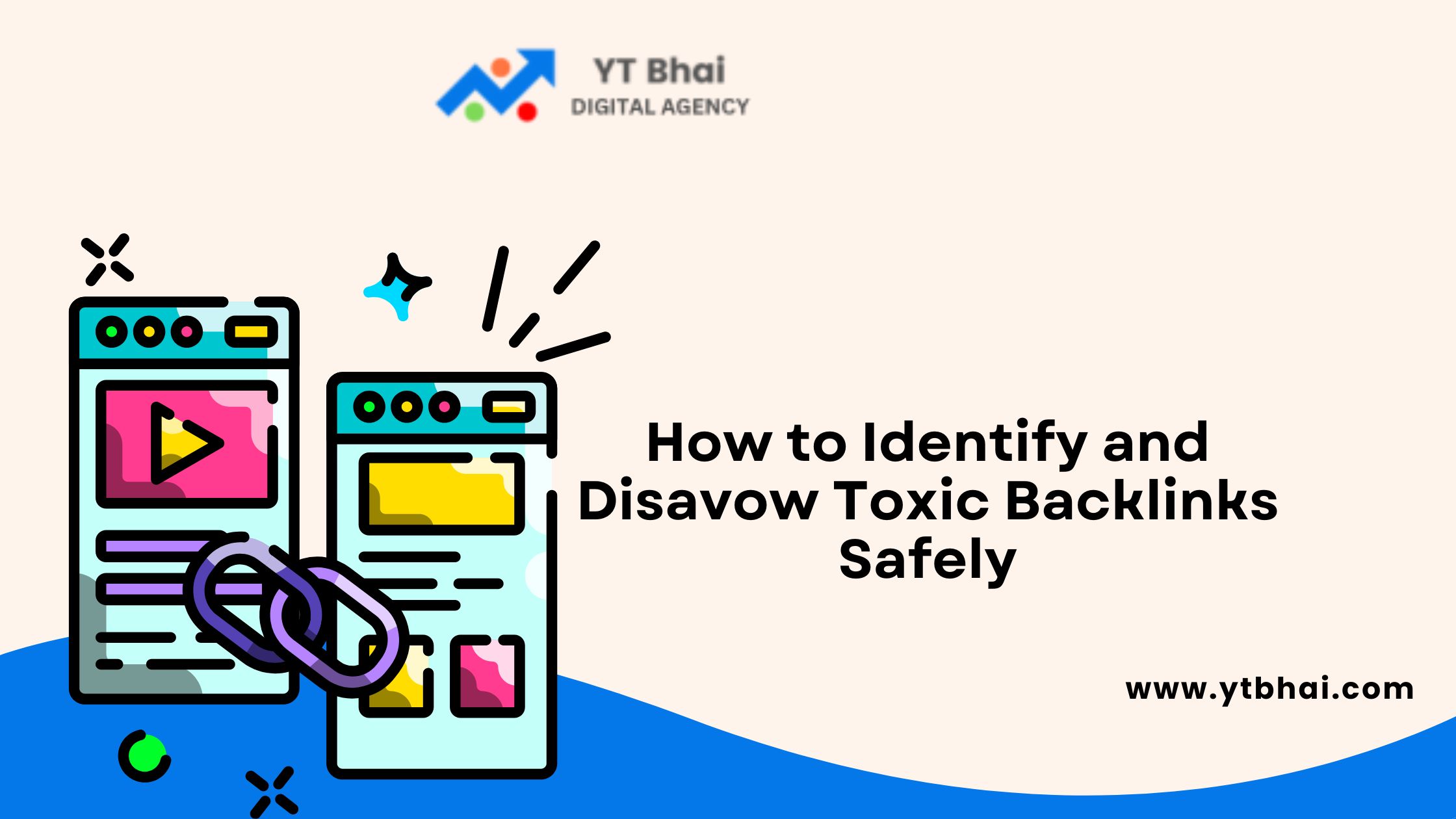
Backlinks are an essential factor in SEO success, but not all backlinks are beneficial. Toxic backlinks can harm your site’s rankings and even result in penalties from search engines. This guide will help you identify harmful backlinks and safely disavow them to maintain your website’s health and rankings.
What Are Toxic Backlinks?
Toxic backlinks are links from spammy, irrelevant, or low-quality websites that can harm your website’s SEO. These links are often a result of black-hat SEO practices, negative SEO attacks, or even unintentional link-building errors.
Search engines view toxic backlinks as a manipulation attempt to inflate rankings, making it crucial to identify and address them promptly.
Why Are Toxic Backlinks Harmful?
- Lower Search Engine Rankings: Toxic backlinks signal to search engines that your website is associated with spam, reducing your visibility in search results.
- Risk of Penalties: Google’s algorithm updates, such as Penguin, target unnatural or manipulative backlinks, potentially leading to penalties.
- Decreased Domain Authority: A high number of toxic backlinks can lower your site’s credibility and trustworthiness.
How to Identify Toxic Backlinks
Identifying toxic backlinks requires careful analysis of your backlink profile. Here’s how you can do it:
1. Use Backlink Analysis Tools
- Google Search Console: Offers a free overview of your backlinks.
- Ahrefs: Provides a detailed breakdown of toxic links and their sources.
- SEMrush: Features a Backlink Audit tool to flag harmful links.
2. Spot Red Flags in Backlinks
- Links from low-authority or spammy domains.
- Backlinks with irrelevant or overly keyword-stuffed anchor text.
- Links from unrelated niches or regions.
- Links with a high number of outbound links on the source page.
3. Perform a Manual Review
Even with automated tools, manually reviewing flagged links ensures you don’t mistakenly disavow legitimate ones.
How to Disavow Toxic Backlinks Safely
Disavowing toxic backlinks involves asking Google to ignore specific links when evaluating your website. Follow these steps:
1. Download Your Backlink Profile
Export your backlink data from tools like Google Search Console, Ahrefs, or SEMrush.
2. Compile a List of Toxic Links
Create a list of harmful backlinks, focusing on domain-level disavowal if multiple spammy links originate from the same site.
3. Create a Disavow File
Format the file as a plain text (.txt) document, listing one domain or URL per line. Use domain: before domain names (e.g., domain:spammydomain.com).
4. Submit the File to Google
Upload your disavow file using Google’s Disavow Links Tool. Be cautious, as improperly disavowing links can harm your rankings.
Best Practices for Disavowing Backlinks
- Disavow Carefully: Only disavow links you are certain are harmful.
- Focus on Domain-Level Disavowals: This is more effective when dealing with multiple toxic links from the same source.
- Monitor Changes: Keep track of your site’s rankings and traffic after disavowing to ensure improvements.
- Update Your Disavow File Regularly: Add newly identified toxic links as needed.
Tools for Identifying and Disavowing Backlinks
| Tool | Purpose | Features |
|---|---|---|
| Google Search Console | Free backlink analysis | Download backlink data directly from Google. |
| Ahrefs | Comprehensive backlink audit | Toxicity scores, domain authority metrics. |
| SEMrush | Backlink audit and disavow | Automatic toxic link detection and reporting. |
Monitoring Your Backlink Profile
Consistently auditing your backlink profile is essential to avoid future issues.
Tips for Regular Monitoring:
- Schedule audits every 3-6 months.
- Set up alerts in tools like Ahrefs or SEMrush to notify you of new backlinks.
- Regularly review your disavow file for updates.
Common Mistakes to Avoid
- Disavowing High-Quality Links: Double-check flagged links to ensure legitimate links aren’t mistakenly disavowed.
- Neglecting to Monitor Results: Regularly review performance metrics to ensure disavowal actions are effective.
- Ignoring the Problem: Delaying action can result in penalties or further ranking drops.
Conclusion
Toxic backlinks pose a significant threat to your website’s SEO health. By identifying and disavowing harmful links, you can protect your rankings and domain authority. Use reliable tools, follow best practices, and stay proactive with regular backlink audits to ensure long-term success.
FAQs
- What are toxic backlinks?
Toxic backlinks are links from spammy or irrelevant sites that harm your website’s SEO. - How can I identify harmful backlinks?
Use tools like Ahrefs, SEMrush, or Google Search Console to analyze your backlink profile. - What is the purpose of disavowing backlinks?
Disavowing tells Google to ignore specific backlinks, preventing them from impacting your SEO. - Should I disavow all low-quality links?
No, disavow only links you are certain are harmful to avoid negatively impacting legitimate links. - How often should I audit my backlink profile?
Conduct audits every 3-6 months or if you notice unusual drops in rankings or traffic.
